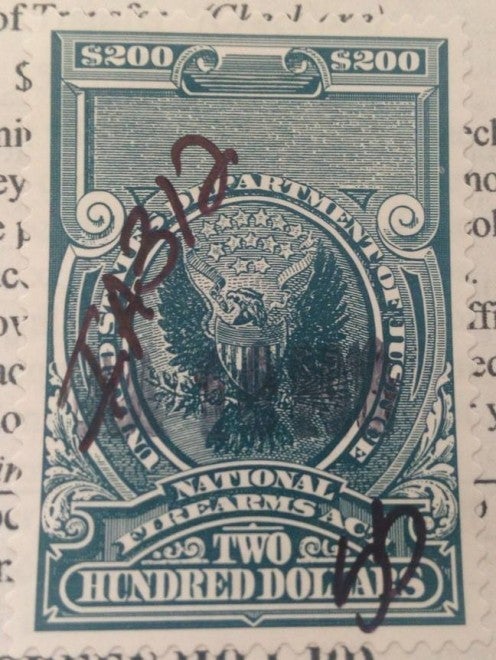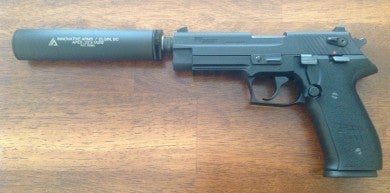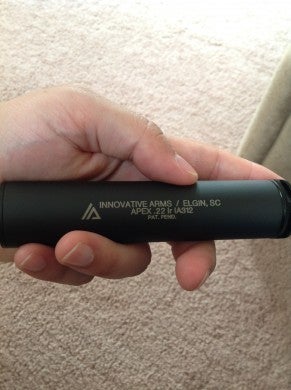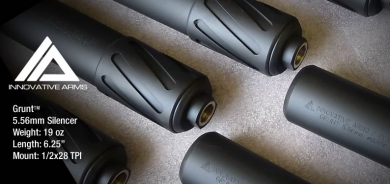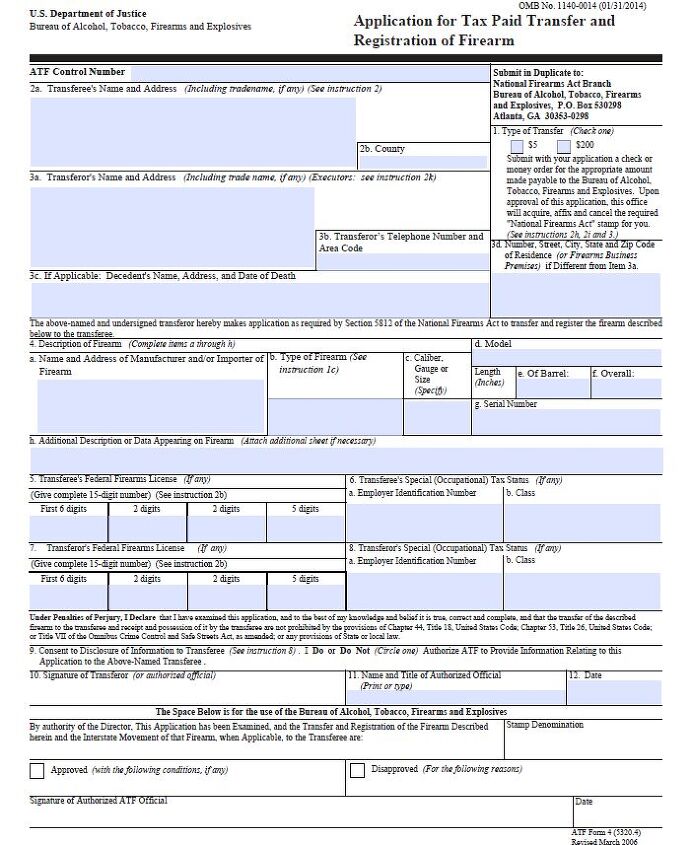Here’s the short version of the story:
On December 12, 2012, I turned my completed Form 4 over to my class III dealer who, in turn, mailed the paperwork into ATF. I was approved on July 16, 2013 and the suppressor I purchased was transferred to me on July 19, 2013.
After going through it, I have no idea why I waited so long to start the process. I shot more rounds that weekend than I have in the last three years. I would encourage anyone who can to buy one, or at the very least, seriously consider buying one.
(I am currently writing articles on the National FIrearms Act, NFA Trusts, Innovative Arms, LLC and a more comprehensive review of the suppressor I bought. Stay tuned.)
Here’s the long version:
I’ve wanted to get into the class III realm for years. When I was a teenager, a neighbor of ours had a 1928 Thompson and two Stens, all full auto. He had a Dillon 1050 in his garage, set up by a bar stool and a TV, which he used to reload for hours in order to feed the Thompson. He also had a suppressed Ruger Mk II. His friends had NFA items as well. Going to the range was quite the experience.
I’ve wanted a suppressor since then. In hindsight, I don’t know why I waited 15 years. One factor was the expense. Suppressors range from a few hundred dollars to $1200 or so. Also, I never wanted to pay $200 for a stamp. But I did want my kids to be able to shoot in our backyard to avoid range fees, so I decided to look into it.
I started saving my pennies and looking around for a .22 can to start with. Lo and behold, there is a suppressor manufacturer near me. Innovative Arms, LLC is located in Elgin, South Carolina. I stopped by and asked them for some information and a demo. More on that later. I am writing an article about Innovative Arms and about how impressed I was with their knowledge, quality and their manufacturing processes. Over the years I have used several suppressed weapons and was intrigued by theirs. I committed right then to start my NFA journey with a .22 suppressor.
While paperwork is ominous to many people, the form is straightforward. It is similar to the 4473 and has spaces for a passport-sized pic. Fingerprints are required on a specified fingerprint card. Most importantly, there is a space on page 2 requiring the signature of the chief law enforcement officer whose organization has jurisdiction over your place of residence. So, yes, you actually have to get passport photos, you have to get fingerprints on the required fingerprint card and yes, your CLEO must sign the form. Fortunately for me, the good folks at Innovative Arms made sure of of my paperwork was in order before and after I had all the required documents. A pdf copy of the form can be found by simply Googling “ATF Form 4”.
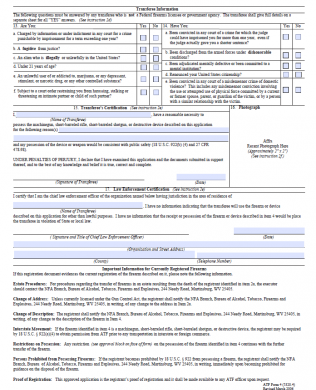
I had paid for the suppressor before starting the paperwork, so the last step was mailing the required documents, along with a $200 check for the transfer fee. The process “officially” starts when your check is cashed. I mailed the docs in mid-December, 2012. My $200 check was cashed by ATF on Jan. 10. Then, the wait begins. The website NFA Tracker ( http://www.nfatracker.com/ ) allows individuals to enter their data and the dates of various events and track the progress of their transfer. You can view the same information of others who have submitted data. The site keeps track of average transfer times, which is currently between 6 and 7 months.
This process is different if using an NFA Trust, which I am writing another article about.
The ATF says they aim for a transfer within 6 months. From the ATF’s website:
“Q: How long does it take for ATF to process my NFA application?
The processing time for NFA applications varies depending on the type of application submitted. Certain applications require the processing of making or transfer taxes while others are tax-exempt. Some applications require the prospective transferee to pass Federal background checks based on both name and fingerprints while transferees such as law enforcement agencies or foreign military agencies are exempt from background checks. ATF also must ensure that a proposed transfer would not violate State or local law in the transferee’s place of residence. The time needed to research and verify State and local requirements can vary greatly depending on the legal complexity of laws governing the type of firearm sought or the business structure and status of applicants other than individuals.
In addition, the sheer volume of applications submitted for ATF review has dramatically increased in recent years. In fiscal year 2005, for example, ATF processed 41,579 NFA applications of all types. By FY 2011 that number had increased to 105,373, with a 25% decrease in the number of NFA examiners available to process the work. Currently, ATF’s customer service goal is to process an Application to Make and Register a Firearm (Form 1) and an Application for Tax Paid Transfer and Registration of a Firearm (Form 4) within 6 months of ATF’s receipt of a correctly executed application. The customer service standard for processing all other types of NFA applications (i.e., those which don’t generally require tax processing or background checks) is within one month of ATF’s receipt of a correctly executed application. It is important to keep in mind that incomplete or incorrect applications slow ATF’s ability to take final action. If you wish to confirm receipt of an application by ATF or obtain a status check on a pending application, you should call the NFA Branch at 304-616-4500. It will help the NFA Branch locate your application more quickly if you have the serial number of the firearm sought for transfer and the name of the prospective transferee.”
I admit, I called the ATF three or four times a week to check on the status of my transfer. But the difficult part was over. All I had to do was wait, which I did for over 6 months. During that time, I had Innovative Arms thread the barrel on my son’s .22 rifle, so it would be suppressor ready. Finally, on July 16, 2013, I was approved. Innovative Arms received the signed and stamped paperwork on July 19 and I immediately went out and shot 500 rounds.
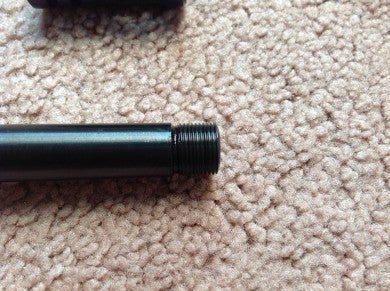
My son’s Crickett Rifle is now suppressor ready. Why suppress a Crickett? Because I live in America. And Innovative hooked me up with a birdcage flash suppressor as a thread protector.
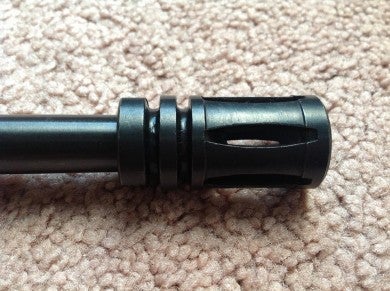
To make a long story even longer, that was my first experience buying a suppressor. I didn’t have any issues getting the suppressor, other than the 6 month wait. Living in the South, I also didn’t have any issues getting a CLEO signature, which I hear can be a problem in certain areas. While I didn’t appreciate the wait and I’m no fan of the NFA, I am very pleased with the suppressor itself.
Again, I’m writing articles on the National FIrearms Act, NFA Trusts, Innovative Arms, LLC and a review of the Apex .22 can itself, which will be posted soon. I hope anyone sitting on the fence about buying a suppressor will see how relatively easy it can be. For me, I hope it’s an annual purchase from now on. I don’t know why I waited so long but I certainly won’t be waiting another decade to purchase a suppressor again. I highly recommend it.
 Your Privacy Choices
Your Privacy Choices
